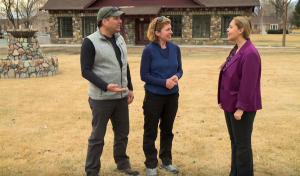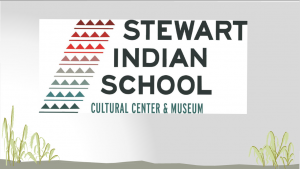Inside the Museum
Open Monday through Friday from 10 a.m. to 5 p.m. (closed on weekends, state, and federal holidays)
Vision
The Stewart Indian School Cultural Center and Museum is dedicated to the memories of the first Stewart students from Great Basin tribes in 1890, and all students and their families who were impacted by the Stewart experience. The vision of the museum is to serve as a steward of living American Indian materials and traditions.
Mission
The mission of the Stewart Indian School Cultural Center and Museum is to tell the stories of the thousands of American Indian children from western tribes who were educated at Stewart. These stories tell of a complex past that changed the course of generations of these children. The countless stories of hardship, resilience, strength, and triumph are at the core of the current efforts to preserve the Stewart campus and are illustrated in the exhibits at the museum. In addition to sharing Stewart’s history, the museum is a place of living heritage through exhibits of contemporary Native art, storytelling, arts and crafts demonstrations, lectures, public programming, and educational activities. The museum serves as a research facility for Stewart students, staff, faculty, alumni, and the general public. This museum is not a museum in the Western sense, but a gathering place for Stewart alumni and their families.
Sense of Place
This land was sacred to the Great Basin tribes long before anyone else settled here. We want to acknowledge the traditional homelands of the Great Basin tribes where Stewart now sits. To recognize this sense of place we have worked with Stewart alumni to develop this place as an ecomuseum. This form of museum integrates past, present, and future and is people-based. This museum honors all Stewart students and their relatives who were affected by the boarding school experience. This place is community-oriented, community created, and community driven, and acknowledges the relationships of all living beings, including people, animals, plants, traditions, songs, ceremonies, spiritual beliefs, and languages.
Our Home, Our Relations: Permanent Stewart Exhibit
Curated by Museum Director Bobbi Rahder, Curator Chris Ann Gibbons, Stewart Alumni Cultural Advisory Committee, Consultants Melissa Melero-Moose, Ben Aleck, Samantha Williams, and contractors Gallagher and Associates, Pacific Studios.
Stewart Indian School in Carson City, Nevada, was operated by the federal government for 90 years, from 1890-1980. During that time, it underwent many changes at the federal level, as well as at the local level. And thousands of students, their families, and communities were affected.
Allotment, Assimilation, and Boarding Schools
The federal government set up boarding schools to educate Native American children in the late 1800s. This forced assimilation policy was part of treaty rights but justified dividing up Native land through allotment and intended to assimilate Indian children into dominant culture. Boarding schools offered basic academics but emphasized patriotism, citizenship, and manual labor skills. These government policies strictly forbade the students from practicing their traditions or speaking their languages, they had no contact with families, and aspects of their lives were severely controlled. They were cut off from their families, culture, and languages.
Nevada State Funding
Beginning in 2015, the Nevada Governor and Legislature appropriated state funding to create and operate the Stewart Indian School Cultural Center & Museum and Welcome Center to interpret the 90 years of history. The new museum opened on January 13, 2020. The Stewart Indian School Cultural Center & Museum’s state operating budget has been cut due to the public health crisis and its effect on the state’s economy. If you would like to support our museum with a donation, please make out a check to Stewart Indian School Cultural Center & Museum and mail to 1 Jacobsen Way, Carson City, NV, 89701. We thank you for your support.
Museum Exhibits
Walking into the lobby of the museum, visitors explore the Native land Stewart occupies, as well as to imagine the way the land looked before Stewart was established. The storytelling room features an exhibit about the four main language groups of Nevada: Wa She Shu (Washoe); Numu (Northern Paiute); Nuwu (Southern Paiute); and Newe (Western Shoshone). Among these four groups are 27 federally recognized tribes, bands, and colonies. This room is used for storytelling by members of these tribal nations, as well as craft demonstrations, and documentaries about Stewart Indian School and Nevada’s tribes. The museum’s hallway features changing exhibits of class photos from the graduating classes at Stewart, as well as student art produced when the school was open. The Research Room has archival documents, photographs, and publications about Stewart as well as boarding school history for the public and alumni to access. In addition, the Research Room has an exhibit about the work of Hopi stonemasons and students in the 1920s who made hand crafted stone buildings and landscaping. The Wa-Pai-Shone Gallery features the work of contemporary Great Basin Native artists through the Great Basin Native Artist Association.
Our Home Our Relations Permanent Exhibit
The main exhibit gallery is an exhibit about Stewart’s 90-year history and all the changes it went through. The exhibit discusses the federal allotment and assimilation policies and the creation of Stewart as a federally operated off-reservation boarding school. This exhibit tells the stories of the students who attended Stewart through their own words. The following is a description of the exhibits:
The compelling history of Stewart will also be shared in educational activities, lectures, programs, and conferences as well as a Volunteer, Docent, and Intern Programs. Watch for future educational classes. If you would like to donate to help us create these classes with cultural teachers please make a cash donation in our donation box or mail a check made out to the Stewart Indian School Cultural Center and Museum and send it to our address: 5366 Snyder Ave., Carson City, NV, 89701. If you would like to volunteer to help us, please click on the link below and fill out the Volunteer form and send it to us either online or through the mail. Volunteer Form Download
We look forward to seeing you visit our new museum and cultural center.
Download Stewart Indian School Cultural Center & Museum presentation, CLICK HERE
Visit Carson virtual Tour and video CLICK HERE
View an episode of PBS – Wild Nevada that features our museum. CLICK HERE 
For a complete list of Stewart Indian School resources, CLICK HERE
Volunteers are Welcome
We welcome volunteers who would like to help us with giving tours, data entry of Stewart artifacts, documents, and photographs into a database and preserving the collections. Please fill out the application form and let us know what you enjoy doing and we will match you with our needs. To Download Volunteer Application CLICK HERE.
Thank you for these grants and donations:
We are pleased to announce that Stewart Indian School Cultural Center & Museum has been awarded a WESTAF Regional Arts Resilience Fund grant award in the amount of $74,000. This was a highly competitive process, during a very challenging time. The individuals involved in the selection process recognized the crucial role our organization plays in our community and for the larger field—regionally and nationally. This grant is made possible through support from the Andrew W. Mellon Foundation.
In addition to this WESTAF grant, our museum has received:
WESTAF CARES Act Grant of $20,000
Nevada Humanities Council grant of $7,500
Jan Leonard and family donation of $51,000
Sandy and Nathan Miller donation of $15,000
Jennifer Webley Foundation donation of $20,000
Team Awesome, Gardnerville donation of $625




